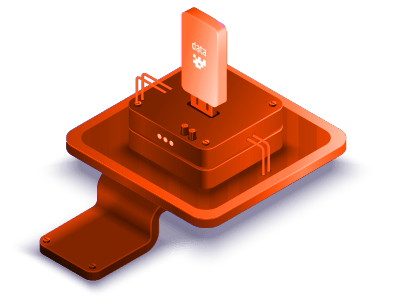Add On: Cyber Investigations
Cyber investigation
The common types of cyber investigations
As the world increasingly moves online, so too do the investigations into potential wrongdoing. Here are five of the most common types of cyber investigations being conducted today.
Financial investigations :
With more and more financial transactions taking place online, there is an increasing need to investigate potential fraud and other financial crimes that occur in cyberspace. This type of investigation often involves tracing funds through various accounts and trying to identify the source of the illicit funds.
Data breach investigations :
Another common type of cyber investigation is one that is launched in the wake of a data breach. These types of investigations are conducted to determine how the breach occurred and to identify who is behind it. In many cases, data breaches are carried out by hackers who are looking to sell the information they have stolen on the black market.
Password breach investigations :
A password breach investigation is launched when it is believed that an individual’s or organization’s passwords have been compromised. Password breaches can occur through a variety of means, such as brute-force attacks, dictionary attacks, or social engineering. Password breach investigations often involve working with law enforcement and third-party providers, such as password management providers, to obtain evidence related to the attack.
Child exploitation investigations :
One of the most harrowing types of cyber-enabled crimes is child exploitation, which can take many forms, including child sexual abuse material (child pornography), child grooming, and sextortion. These crimes are typically investigated by law enforcement agencies in partnership with NGOs that specialize in this type of work. The goal of these investigations is to identify and safe guard victims and bring those responsible for their exploitation to justice.
Victim Identification is the core duty of anyone investigating online child sexual exploitation. These are complex investigations that involve an international community and require a coordinated response. Assisting investigators with advanced software that is current is our reason for existence.
– Arnold Guerin, Director of Child Protection at Hubstream
Malware investigation :
A malware investigation is launched when it is believed that malicious software has been installed on a device or network. This type of investigation can be initiated internally, by anti-virus software, or externally, by law enforcement. Malware investigations are often complex and time-consuming, as investigators must sift through large amounts of data to determine the source and scope of the infection. In some cases, malware investigations may also involve forensic analysis of infected devices.
Phishing investigation :
A phishing investigation is launched when a phishing attack is believed to have targeted an individual or organization. Phishing attacks are typically carried out by email and usually involve the attacker posing as a legitimate entity to trick the victims into disclosing sensitive information, such as login credentials or financial information. Phishing investigations often involve working with third-party providers, such as email providers, to obtain evidence of the attack.
Denial-of-service (DoS) investigation :
A denial-of-service investigation is a type of cyber security assessment conducted when there is suspicion that a malicious attack has targeted an organization or user. This investigation aims to identify how the attack was accomplished, who initiated it, and any other relevant information needed to remediate the issue.
Ransomware investigation :
Ransomware investigation analyzes malicious files to determine their exact purpose and identify the specific ransomware family present on a system. It involves researching the techniques used, their behaviors, and any known weaknesses to protect an organization from future attacks. Ransomware investigations are typically conducted by digital forensics experts that specialize in cyber security.
The process of cyber investigations
Every day, businesses around the world fall victim to cybercrime. These attacks can come in many forms, from ransomware and phishing scams to data breaches and denial of service attacks. When a business suffers a cyberattack, it’s important to move quickly to mitigate the damage and prevent future attacks. But how is that done? The first step is to launch a cyber investigation.
A cyber investigation is a process of identifying, containing, and eradicating a cybersecurity incident. This process can be broken down into three main phases:
Identification :
This is the phase where a cyber investigation collects data and information about the incident to determine what happened and who was involved.
Containment :
Once the investigator has identified the scope of the incident, they’ll need to take steps to contain it and prevent further damage. This may involve things like disconnecting compromised devices from their network or changing passwords.
Eradication :
In this final phase, the cyber investigator will work to remove all traces of the incident from the systems and put measures in place to prevent future attacks. This may involve restoring data from backups or disinfecting infected devices.
The different types of data generated by cyber investigations
Cyber investigations can be complex and time-consuming. They often require collecting various types of data from different sources. This data can be divided into three categories: primary, secondary, and tertiary. Here’s a look at each data type and how it can be used in a cyber investigation.
Primary data :
It is directly from the source. This type of data is trustworthy because it hasn’t been interpreted or altered in any way. It’s essential to have primary data in a cyber investigation to confirm the information’s accuracy. Examples of primary data include:
Secondary data :
It is information collected by someone other than the investigator. Examples of secondary data include:
Tertiary data :
It is information compiled from multiple sources and organized in a specific way. An Investigators Notebook is an example of tertiary data. This information can be useful for getting an overview of the case, but it’s important to remember that tertiary data is often interpretive and may not be accurate. Examples of tertiary data include:




